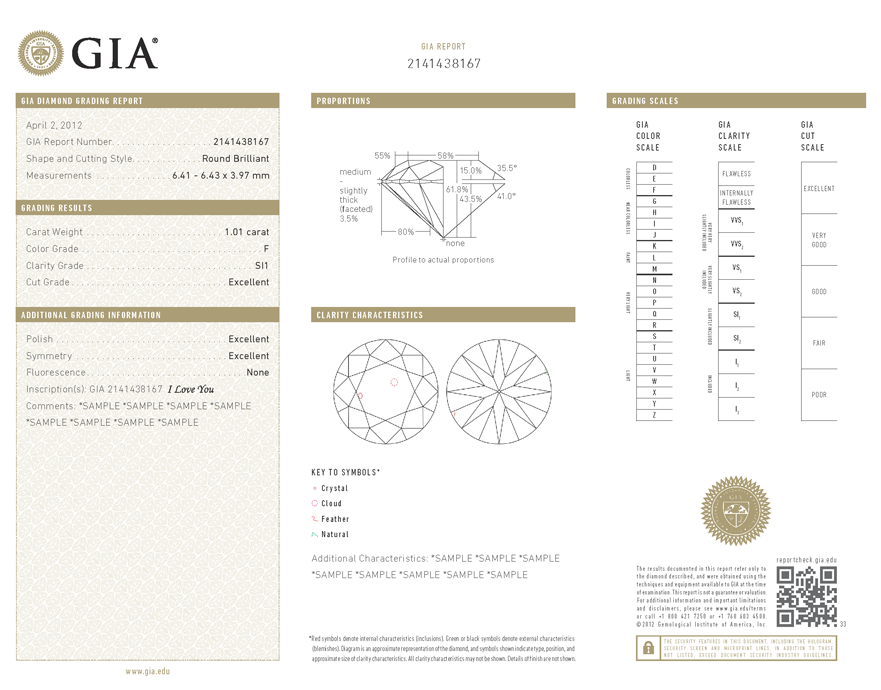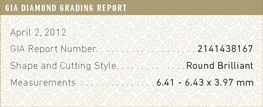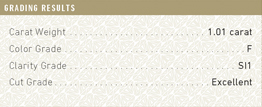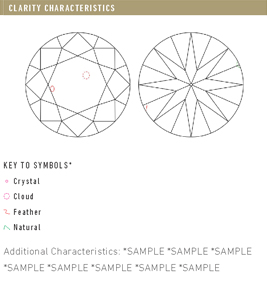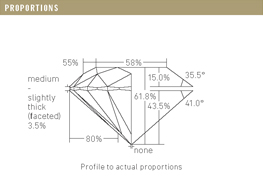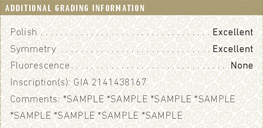So you’re ready to propose to the love-of-your-life with a Knox Custom Engagement Ring, but you want to be positive you’ve chosen the best possible diamond. Knox Jewelers recommends selecting a diamond evaluated by GIA to ensure the diamond comes with a detailed graded report. A GIA Diamond Grading Report is the standard for evaluating diamonds and their quality. Don’t know how to read a GIA Diamond Grading Report? Don’t worry, Knox will always help you learn everything about your diamond selection, either in-store or online.
GIA stands for Gemological Institute of America. It is a public and independent benefit institute that was established in 1931. They are the leading source of knowledge, standards, and education when it comes to gems and jewelry. GIA is the creator of the “4 Cs” (Color, Clarity, Cut, and Carat Weight) and the International Diamond Grading System that maintains the methods and best practices for describing diamond quality. Today, virtually everyone in the international diamond industry uses these methods for comparing and evaluating diamonds. A grading report from GIA is more than a collection of observations about a gem. It represents an accurate and unbiased, comprehensive scientific investigation.
Let’s review the main components of a GIA grading report.
Each diamond evaluated by GIA is assigned a unique GIA Report Number which you can use to look up your report online.
A diamond’s Shape refers to its face-up outline. Popular shapes include round, square, oval, rectangle and pear.
Cutting Style refers to a stone’s faceting pattern. Brilliant-Cut diamonds contain a large number of small, triangular shaped facets. These include Round Brilliant, Princess and Ovals cut gems. Step-Cut diamonds contain larger, long, rectangle shaped facets. These include Emerald and Asscher cut gems.
A diamond’s Measurements will be listed in the order of smallest width, largest width and height.
The Weight of a diamond is measured in a form called carats. GIA reports a diamond’s carat weight to the nearest hundredth of a carat. To give you some perceptive, 1 carat is equal to 0.20 grams.
The GIA Color Grade system describes the diamond’s lack of color by ranging from the denotation D, which is colorless, all the way to Z, which will be a shade of either light yellow or brown. Color grades from D to F are considered colorless diamonds and G to J are near-colorless.
Diamond Clarity evaluates the size, the number, relief, nature, and position of internal inclusions and surface blemishes. The Institute assigns one of eleven clarity grades to a diamond. This can range from the clarity grade of flawless to that of included and lists the most prominent clarity characteristics. Stone graded VS2 and above should be eye-clean, with inclusions only seen under magnification.
On some report formats, Clarity Characteristics are shown as a plotted diagram, marking significant or identifying characteristics. A key lists the relevant symbols and their definitions. Red symbols stand for inclusions, which characteristics inside a stone. Green or black symbols stand for external characteristics on the diamond, or blemishes.
For the standard round brilliant diamond, GIA assigns a Cut Grade ranging from Excellent to Poor. Diamonds can be Excellent, Very Good, Good, Fair, or Poor. This grading takes into account seven components; Polish, Symmetry, Weight Ratio, Durability, Brightness, Fire, and Scintillation.
The diamond’s Proportions are thoroughly described as well, from its shape and cutting style to its precise measurements. A diagram will show you the diamond’s profile as well as its dimensions.
A description of Fluorescence is provided as an additional identifying characteristic. GIA tests every diamond to ensure that it is natural and to identify any processes that may have been used to alter its color or clarity. An asterisk next to the color or clarity grade indicates that the diamond has been treated. Treatments and additional identifying characteristics are described in the comments section.
If the diamond is inscribed, the Inscription will be noted on the report as well. A GIA Grading Report has a number of sophisticated security features designed to ensure its authenticity and integrity. They offer a variety of diamond reports, among them the Diamond eReport, an interactive online option available only for natural and untreated diamonds(perfect if you want to search for beautiful custom diamond engagement rings from the comfort of your home). The Institute operates under strict standard procedures and principles designed to ensure objectivity and accuracy, no matter which report you receive.
That’s how to read a GIA Diamond Grading Report! It’s not as intimidating as you might think. Selecting the perfect ring among many beautiful custom diamond engagement rings might be another story. Luckily, Knox Jewelers can help you look at a variety of rings and narrow it down to the perfect one for your lucky life partner. GIA Diamond Grading Reports are also available! Let Knox Jewelers help you learn about diamonds so you can pick the perfect diamond that meets the color, clarity, cut, and carat weight that you desire and help give your engagement a beautiful start.

